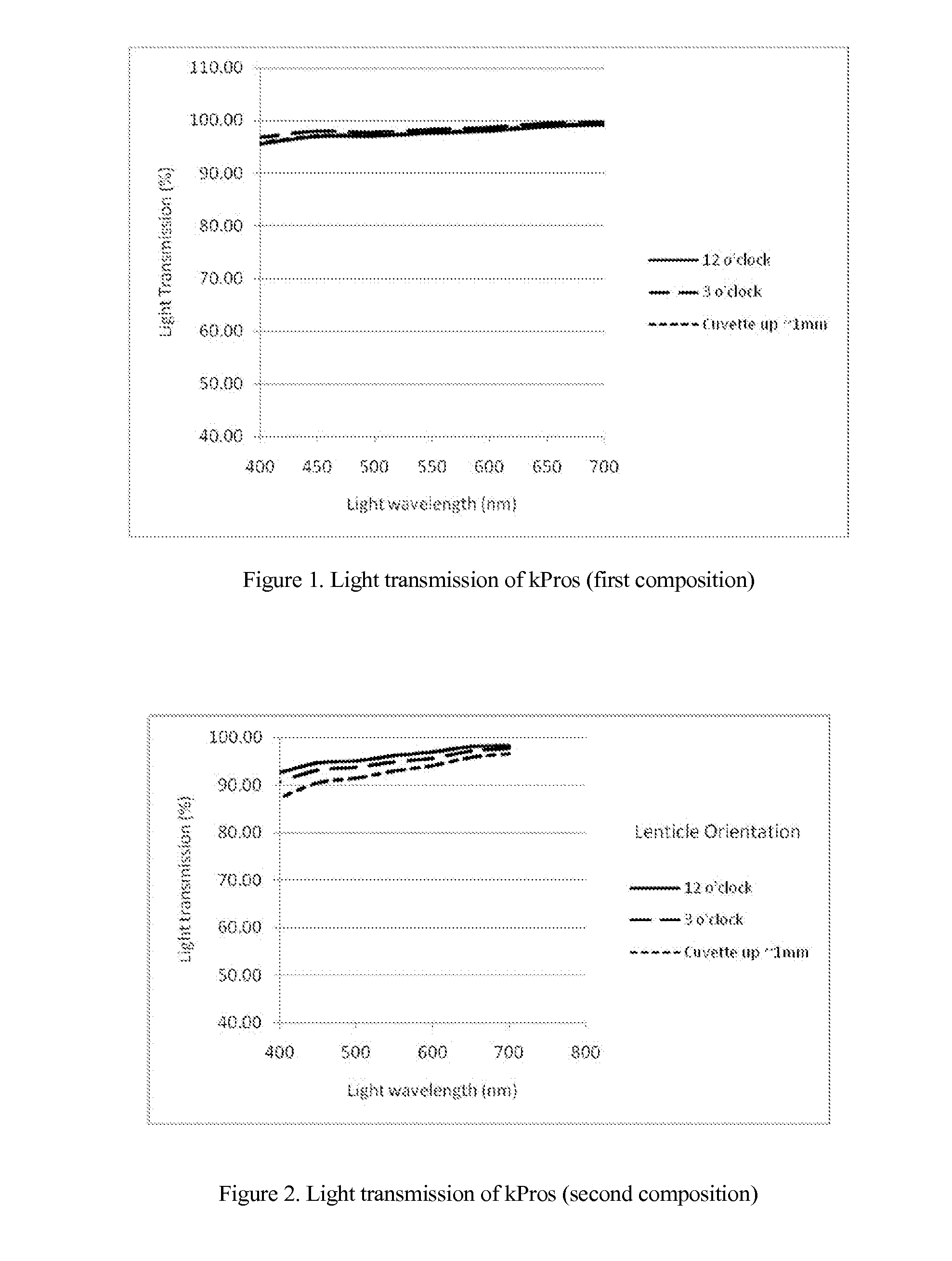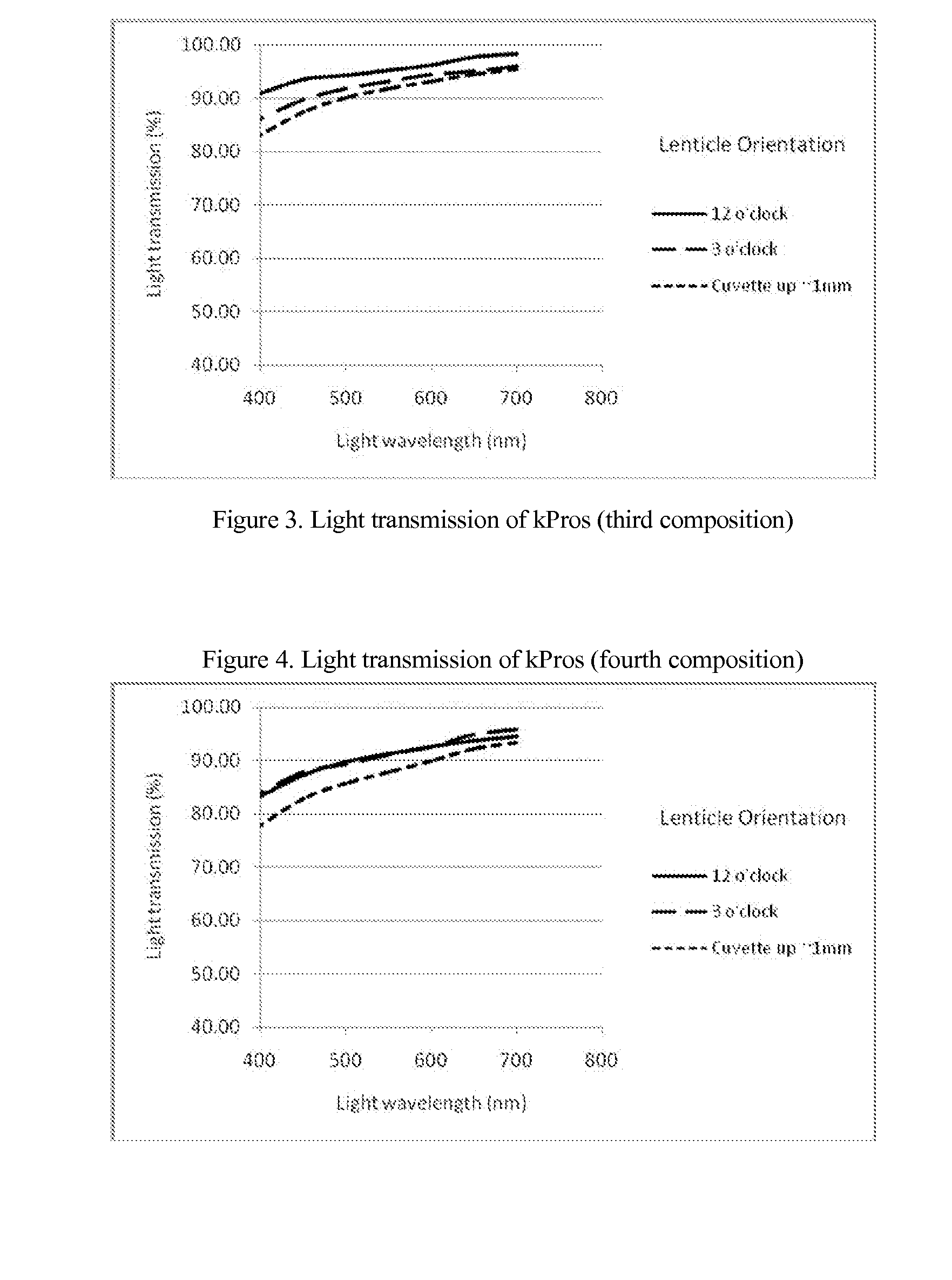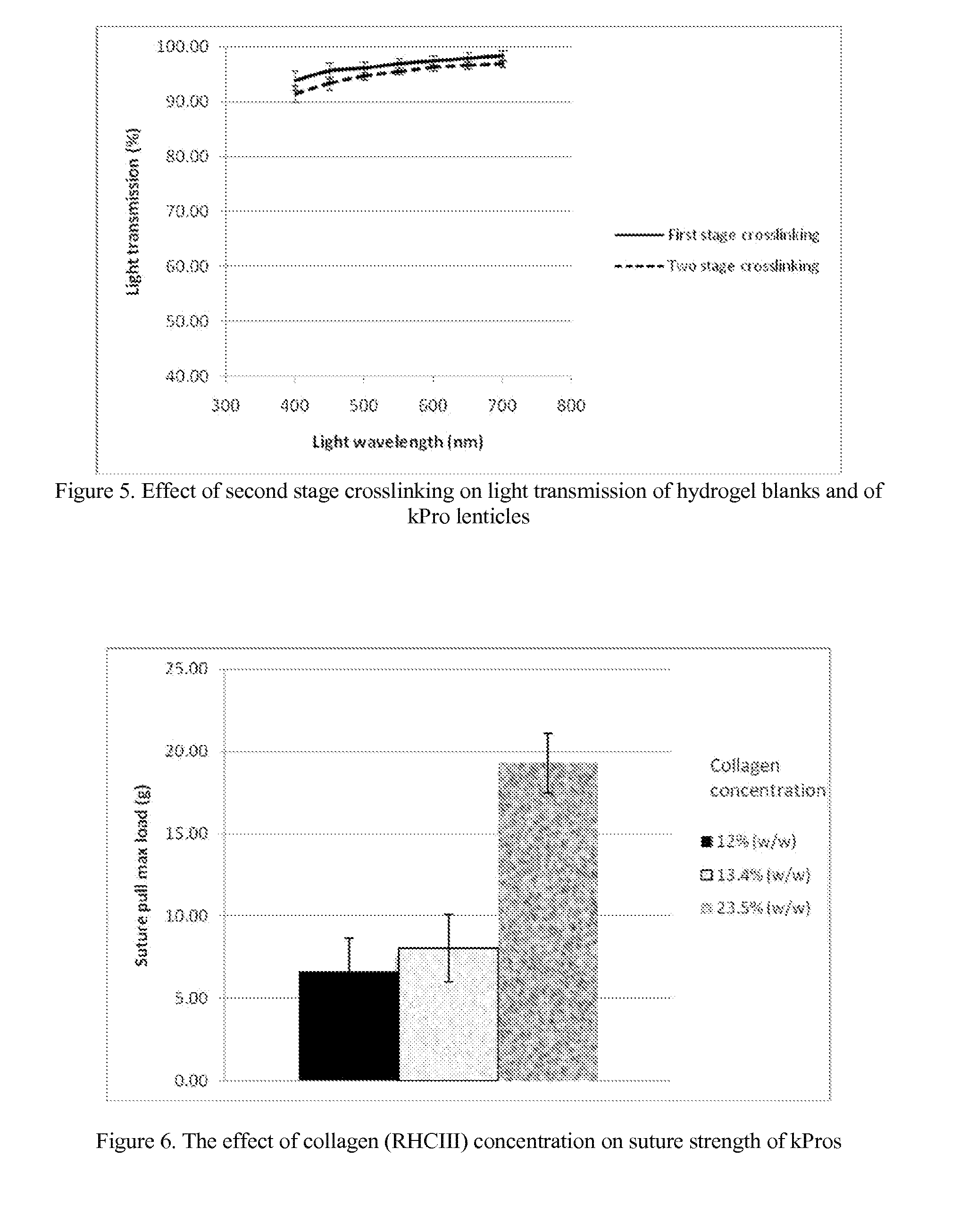Keratoprosthesis
a keratoprosthesis and crosslinking technology, applied in the field of crosslinking collagen, can solve the problems of poor glucose, poor crosslinking density, and inability to implant synthetic hydrogels in the eye, and achieve the effects of improving the kpro lenticle properties, improving the kpro lenticle properties, and improving the kpro lenticle properties. , the effect of improving the kpro lenticle properties, improving the kpro len
- Summary
- Abstract
- Description
- Claims
- Application Information
AI Technical Summary
Benefits of technology
Problems solved by technology
Method used
Image
Examples
example 1
Recombinant Human Collagen Type III (“RHCIII”)
Methods
[0066]Diafiltration.
[0067]0.25-0.35% (w / v) RHCIII solution is diafiltered using Millipore Pellicon holder (EMDMillipore, Billerica, Mass.) and PLCHK ultrafiltration membrane (as shown in FIG. 20, Step B). Viscosity of RHCIII is between 3000-6000 centiPoise (“cP”), preferably 4500-5500 cP. As pre-cooled WFI buffer (pH 7.0) is pumped into the retentate at a set flow rate, the salt / acid containing filtrate is removed at an equivalent rate. In-line conductivity and pH is monitored until the conductivity of filtrate typically equals 43 μS / cm with corresponding retenate, a diafiltered RHCIII (“DRHCIII”) solution, having a pH of 4.0-4.5 with viscosity between 300-900 cP, preferably 650-850 cP.
[0068]Lyophilization.
[0069]0.15-0.2% (w / v) DRHCIII is then lyophilized using a VirTis Advange Plus (VirTis, Gardiner, N.Y.) bulk tray lyophilizer between 30-60 hours as shown in FIG. 20, Step C. The small variation in concentration of DRHCIII arises...
example 2
VitroCol, Human Collagen type I (“HCI”)
Methods
[0113]Diafiltration.
[0114]0.25-0.35% (w / v) HCI solution is diafiltered using Millipore Pellicon holder (EMDMillipore, Billerica, Mass.) and PLCHK ultrafiltration membrane (as shown in FIG. 20, Step B). Target viscosity of HCl is between 3000-6000 centiPoise (“cP”), preferably 4500-5500 cP. As WFI buffer is pumped into the retentate at a set flow rate, the salt / acid containing filtrate is removed at an equivalent rate. In-line conductivity and pH is monitored until the conductivity of filtrate equals 55 μS / cm, which corresponds to a retentate, DHCI solution, pH of 4.0-4.5 with viscosity between 300-900 cP, preferably 650-850 cP. As outlined in Table 9, different target conductivity values were explored to ensure that the most desirable physical, mechanical, optical, thermal and permeable properties of the kPro lenticles were achieved.
[0115]Lyophilization.
[0116]0.15-0.2% (w / v) diafiltered HCl (“DHCI”) is then lyophilized using a VirTis Adv...
example 3
Recombinant Human Collagen Type I (“RHCI”)
Methods
[0123]Diafiltration.
[0124]0.25-0.35% (w / v) RHCI solution is diafiltered using Millipore Pellicon holder (EMDMillipore, Billerica, Mass.) and PLCHK ultrafiltration membrane (as shown in FIG. 20, Step B). Target viscosity of RHCI is between 3000-6000 centiPoise (“cP”), preferably 4500-5500 cP. As WFI buffer is pumped into the retentate at a set flow rate, the salt / acid containing filtrate is removed at an equivalent rate. In-line conductivity and pH is monitored until the conductivity of filtrate equals 165 μS / cm, which corresponds to a g retentate, DRHCI solution, pH of 4.0-4.5 with viscosity between 300-900 cP, preferably 650-850 cP. As outlined in Table 14, different target conductivity values were explored to ensure that the most desirable physical, mechanical, optical, thermal and permeable properties of the kPro lenticles were achieved. Trial and error was needed to definitively correlate both filtrate conductivity and retentate p...
PUM
| Property | Measurement | Unit |
|---|---|---|
| viscosity | aaaaa | aaaaa |
| viscosity | aaaaa | aaaaa |
| viscosity | aaaaa | aaaaa |
Abstract
Description
Claims
Application Information
 Login to View More
Login to View More - R&D
- Intellectual Property
- Life Sciences
- Materials
- Tech Scout
- Unparalleled Data Quality
- Higher Quality Content
- 60% Fewer Hallucinations
Browse by: Latest US Patents, China's latest patents, Technical Efficacy Thesaurus, Application Domain, Technology Topic, Popular Technical Reports.
© 2025 PatSnap. All rights reserved.Legal|Privacy policy|Modern Slavery Act Transparency Statement|Sitemap|About US| Contact US: help@patsnap.com



